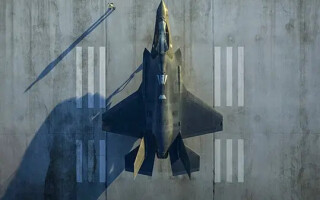Astronauts may take information systems from seabed to space
NewsJuly 24, 2019
KEY LARGO, Fla. Scientists, engineers, and key partners of the Naval Surface Warfare Center Panama City Division (NSWC PCD) are collaborating by testing and adapting an NSWC PCD technology -- originally designed for undersea diving -- for potential use during space exploration missions.
The Diver Augmented Vision Device (DAVD) group from NSWC PCD recently teamed up with a group from NASA's Johnson Space Center during what it called NEEMO-23, the 23rd voyage of the NASA Extreme Environment Mission Operations, held at the Aquarius Reef Base underwater habitat in Key Largo. The Aquarius and its surroundings is used as a training and mission analog for space exploration by providing buoyancy similar to walking on the moon or Mars.
The DAVD -- originally designed, developed, and tested by NSWC PCD -- is a high-resolution, see-through head-up display (HUD) embedded directly inside of a Kirby Morgan-37 dive helmet, enabling divers to have a high-resolution visual display of sector sonar imagery (real-time topside view of the diver's location and dive site), text messages, diagrams, photographs, and augmented-reality videos.
During the recent NEEMO-23 test, NASA astronauts and technical personnel used the DAVD Generation 1.0 system to conduct analog training missions and determine the potential for using a similar system in their future extra vehicular activity (EVA) space suits during space-exploration missions.
Allie Williams, DAVD team lead engineer, said of the project: “It’s exciting to see dual-purpose use for a system originally designed for navy divers, and it is an honor to work with NASA. This capability is game-changing for divers who usually work in zero visibility conditions -- it essentially gives them sight again through real time data and sonar. Even in good visibility conditions, the DAVD system allows for hands-free information and less mental strain of trying to remember topside instructions. The same benefits can be gained by astronauts as well -- including better situational awareness, safety, and allowing them to be more effective in their missions.”
The outcomes and lessons learned from the NEEMO-23 missions will provide insight needed to move the system one-step closer to space, says Dennis Gallagher, DAVD team project manager.






